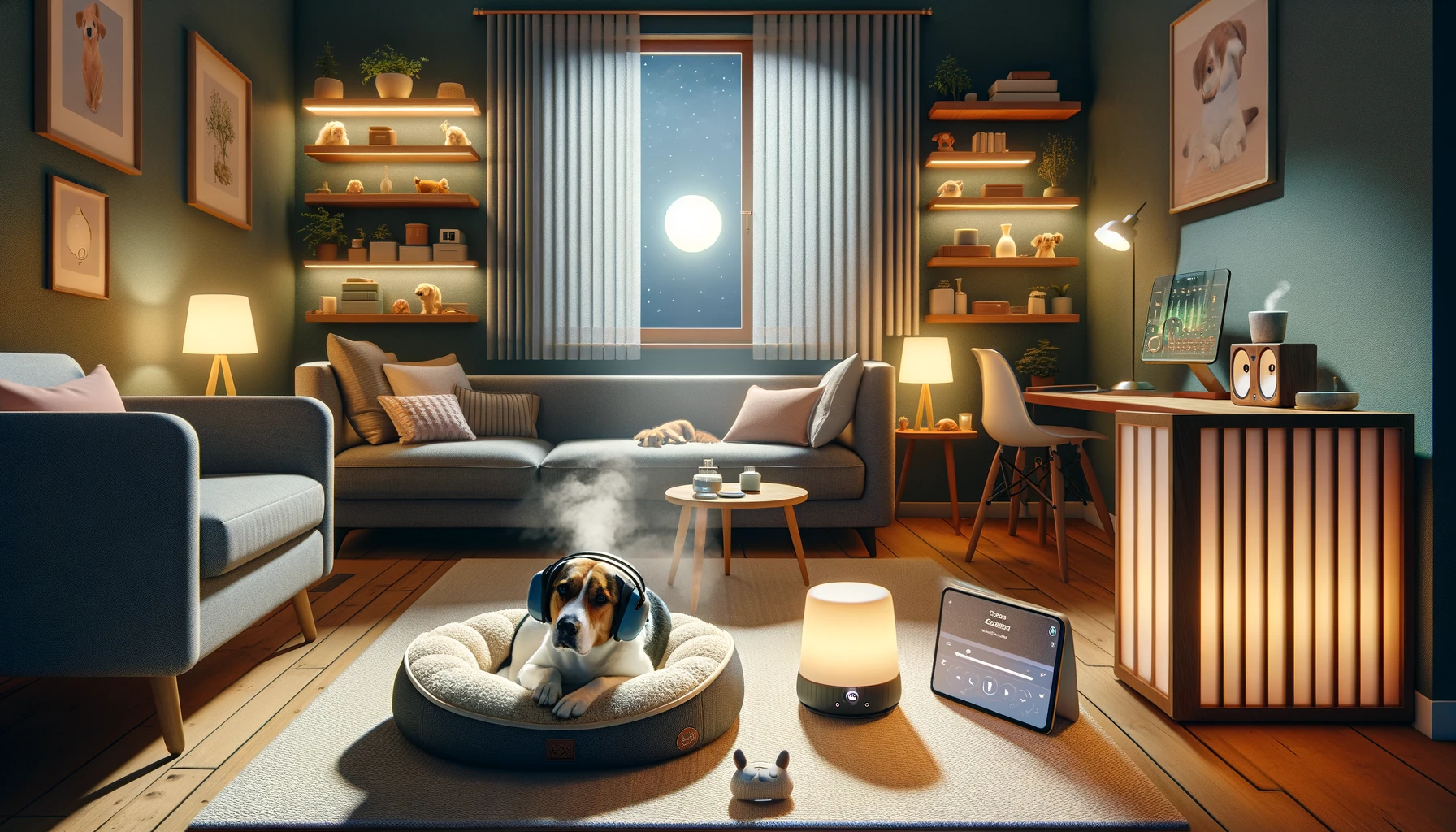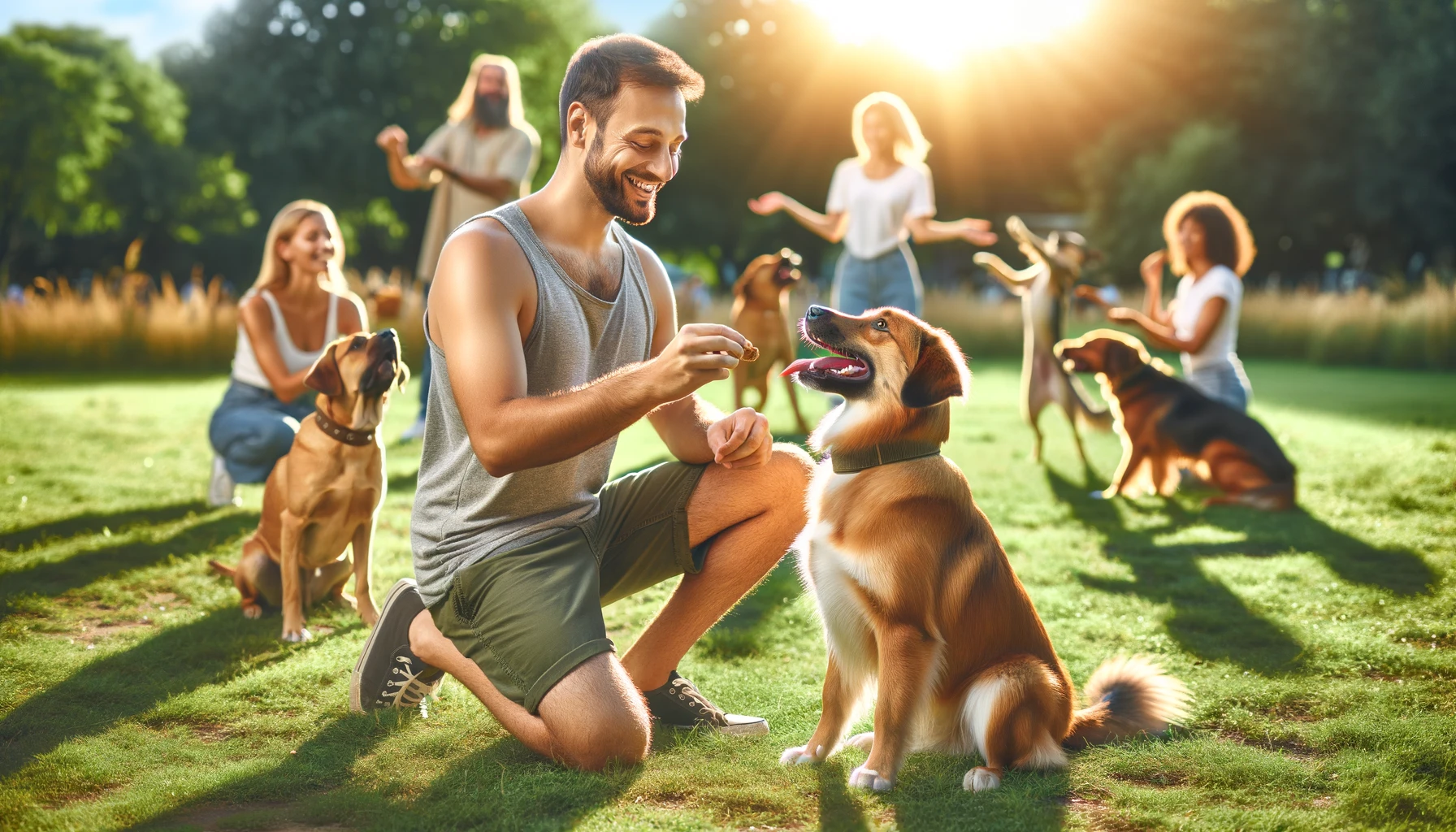Do you notice your furry companion trembling, panting, or seeking solace at the sound of thunderstorms, fireworks, or loud noises? Your dog may be among the many who struggle with noise phobia.
Understanding why certain dogs are prone to this overwhelming fear is crucial in helping them cope. Noise sensitivity can stem from a combination of genetic predisposition, lack of exposure during critical development periods, or negative experiences associated with loud sounds.
The impact of noise phobia on dogs goes beyond mere discomfort; it can lead to heightened anxiety, stress-related behaviors, and even physical health issues. These reactions not only affect their emotional well-being but also strain the bond between pet and owner.
Being aware of how noise phobia influences your dog’s quality of life is the first step towards implementing effective strategies to provide comfort and support during distressing moments. If you seek guidance on aiding your noise-phobic companion in finding peace amidst the cacophony of our noisy world, read on for six insightful strategies tailored to soothe their sensitive souls.
Creating a safe space for your noise-phobic dog
This is essential in helping them cope with loud noises that trigger their anxiety. By designating a quiet area within your home, such as a cozy corner or a specific room, you provide your dog with a sanctuary where they feel secure during noisy events like thunderstorms or fireworks.
This safe space can be equipped with familiar items like your dog’s favorite blanket, toys they enjoy playing with, and treats they find comforting. Having these reassuring elements close by can help alleviate their stress and create a sense of calm amidst chaos.
In addition to familiar objects, white noise machines can be incredibly beneficial for noise-sensitive dogs. These devices emit constant, soothing sounds that help mask disruptive noises from outside sources.
The consistent background noise provided by white noise machines can act as a buffer against sudden loud sounds that may startle or distress your dog.
Consider placing a white noise machine in your pet’s safe space or near areas where loud noises are commonly heard to create a more tranquil environment for them.
For example, during festive seasons when fireworks displays are common, having a designated safe space with calming blankets and toys can offer solace to your noise-phobic dog. Introducing the use of a white noise machine in this area can further enhance their sense of security by minimizing the impact of explosive sounds from fireworks.
Together, these strategies work synergistically to provide comfort and reassurance to your beloved pet during challenging times when loud noises are prevalent. Remember that creating a safe haven for your furry friend not only helps manage their anxiety but also strengthens the bond between you and your dog through understanding and support.
Behavioral Training Techniques
Behavioral training techniques can be incredibly effective in helping noise-phobic dogs manage their fear and anxiety. Desensitization methods involve exposing your dog to noises in a controlled environment, starting with low levels of sound and gradually increasing the volume over time.
For example, if your dog is scared of thunderstorms, you can use recordings of storm sounds at a very soft level initially and gradually raise the volume as your dog becomes more comfortable. Pairing this exposure with positive reinforcement such as treats or favorite toys can help create new, less fearful associations with these noises.
Counterconditioning exercises are another valuable tool for helping noise-sensitive dogs. By associating loud sounds with something positive like tasty treats or playtime, you can help your dog reframe their perception of these noises from scary to pleasant.
For instance, every time a loud noise occurs, you could engage in a fun game with your dog or offer them a yummy snack to shift their focus away from the source of anxiety.
Professional help from trainers or behaviorists who specialize in working with noise-phobic pets can make a significant difference in developing tailored training programs for your furry friend.
These experts have the knowledge and experience to assess your dog’s specific needs and create structured desensitization and counterconditioning plans that take into account the individual triggers affecting your pet. Seeking professional guidance ensures that you are employing strategies effectively and maximizing your efforts to calm your noise-phobic dog.
Implementing Calming Supplements
When it comes to helping your noise-phobic dog find relief, incorporating calming supplements can be a valuable addition to their overall care plan. Natural remedies like chamomile and lavender are known for their soothing properties and can promote relaxation in noise-anxious dogs.
These supplements can help take the edge off during stressful situations, creating a more peaceful environment for your furry companion. For example, diffusing lavender essential oil in your dog’s safe space or adding chamomile to their meals may aid in reducing anxiety levels triggered by loud noises.
In instances where noise phobia is severe and requires more intensive intervention, veterinary prescriptions may be necessary. Veterinarians can prescribe medications specifically tailored to address the underlying causes of your dog’s distress.
These medications can range from mild sedatives to more targeted anti-anxiety treatments, depending on the individual needs of your pet. It’s crucial to consult with a professional before introducing any prescription medications to ensure they are safe and appropriate for your dog’s condition.
By combining the benefits of natural calming supplements with prescribed medications when needed, you can create a comprehensive approach to managing your noise-phobic dog’s anxiety. While natural remedies offer gentle support in day-to-day stressors, veterinary prescriptions provide targeted relief for more severe cases of noise phobia.
Finding the right balance between these options under the guidance of a veterinarian can significantly improve your dog’s quality of life and help them navigate noisy situations with greater ease.
Physical Exercise and Mental Stimulation
Regular exercise plays a crucial role in helping noise-phobic dogs manage their stress levels and enhance their overall well-being. Physical activities such as brisk walks, runs, or engaging in play sessions not only help in burning excess energy but also contribute to reducing anxiety levels in dogs.
For instance, taking your noise-phobic dog on daily walks or jogs can aid in releasing pent-up tension and promoting a sense of calmness, making them less reactive to loud noises that typically trigger fear responses.
In addition to physical exercise, mental stimulation through interactive toys and games can be an effective way to distract noise-anxious dogs from external triggers that cause anxiety. Providing puzzles, treat-dispensing toys, or interactive games like hide-and-seek engages your dog’s cognitive functions and redirects their focus away from distressing noises.
By keeping their minds occupied with stimulating activities, noise-phobic dogs are less likely to fixate on loud sounds and exhibit anxious behaviors. For example, introducing a puzzle feeder or a sniffing mat for your dog to explore can not only provide mental enrichment but also create a positive association with playtime when confronted with scary noises.
Combining physical exercise with mental stimulation offers a holistic approach to managing noise phobia in dogs by addressing both the physical and emotional aspects of their well-being.
By incorporating regular walks or playtime along with engaging toys and brain-teasing activities into your noise-phobic dog’s routine, you are not only helping them stay physically fit but also providing valuable outlets for stress relief and anxiety reduction.
Remember that each dog is unique, so experimenting with different types of exercises and interactive toys can help you determine what works best for calming your furry companion amidst noisy situations.
Positive Reinforcement Techniques
Positive reinforcement techniques can be powerful tools in helping noise-phobic dogs cope with loud noises and reduce anxiety. By utilizing reward-based training methods like clicker training, dog owners can create a positive association for their furry companions when faced with distressing sounds.
For example, whenever there is a loud noise such as thunder or fireworks, immediately rewarding your dog with treats or praise for remaining calm can help them understand that good things happen during stressful situations.
Consistency in rewards is key to effectively communicating with noise-phobic dogs and reinforcing desired behaviors. Dogs thrive on routine and clear expectations, so establishing a consistent reward system for staying calm during noisy events is crucial.
Whether it’s giving your dog their favorite toy, verbal praise, or a special treat every time they exhibit calm behavior in the presence of loud noises, maintaining this consistency helps your pet understand what is expected of them and reinforces their ability to stay calm in challenging situations.
By incorporating positive reinforcement techniques and staying consistent with rewards, pet owners can empower their noise-phobic dogs to manage their fears and anxieties more effectively over time.
Through patience, understanding, and dedication to creating a safe environment supported by positive experiences during noisy events, dog owners can play a significant role in helping their pets overcome noise phobia and lead happier, more relaxed lives.
Seeking support from other pet owners
This can be a powerful way to navigate the challenges of having a noise-phobic dog. By joining online communities and forums dedicated to supporting pet owners with noise-sensitive dogs, you can find valuable advice, shared experiences, and a sense of camaraderie.
These platforms offer a safe space to vent frustrations, seek tips on calming strategies, and share success stories in managing noise phobia in dogs. For instance, sharing how certain behavioral techniques have helped desensitize your dog to loud noises may inspire and benefit other pet owners facing similar struggles.
In addition to virtual connections, local pet meetups present an opportunity to connect with like-minded dog owners who understand the unique needs of noise-phobic pets. These gatherings allow for in-person interactions where you can exchange practical tips, recommend calming products or professionals, and provide mutual support in a welcoming environment.
Imagine attending a local park meetup where fellow pet owners share their journey in helping their noise-phobic dogs cope with fireworks or thunderstorms. This face-to-face interaction not only fosters friendships but also creates a network of understanding individuals who can offer empathy and encouragement during challenging times.
Moreover, being part of these supportive pet communities goes beyond just seeking help – it’s about building lasting relationships with people who genuinely care about the well-being of your furry companion.
Whether it’s through an online forum discussing relaxation techniques before New Year’s Eve fireworks or meeting up at a dog-friendly cafe to swap stories about soothing anxious pups during loud events, the bond forged by shared experiences can be reassuring and empowering for both you and your noise-phobic dog.
The sense of community that comes from connecting with others on this journey can provide strength and reassurance as you work towards helping your beloved pet overcome their fear of loud noises.
Conclusion
In conclusion, calming a noise-phobic dog requires patience, understanding, and a tailored approach to help them feel secure during loud and unsettling situations.
By creating safe spaces, utilizing behavioral training techniques, implementing calming supplements when needed, providing physical exercise and mental stimulation, using positive reinforcement strategies consistently, and seeking support from other pet owners, you can help your furry companion cope with their noise phobia in a healthy way.
Remember that every dog is unique, and what works for one may not work for another. It’s essential to observe your dog’s reactions closely, adjust strategies as needed, and always prioritize their well-being and comfort.
With dedication and the right tools at hand, you can help your noise-phobic dog feel safe and supported through challenging times. Your efforts will not only benefit your pet but also strengthen the bond you share with them as you navigate this journey together.





